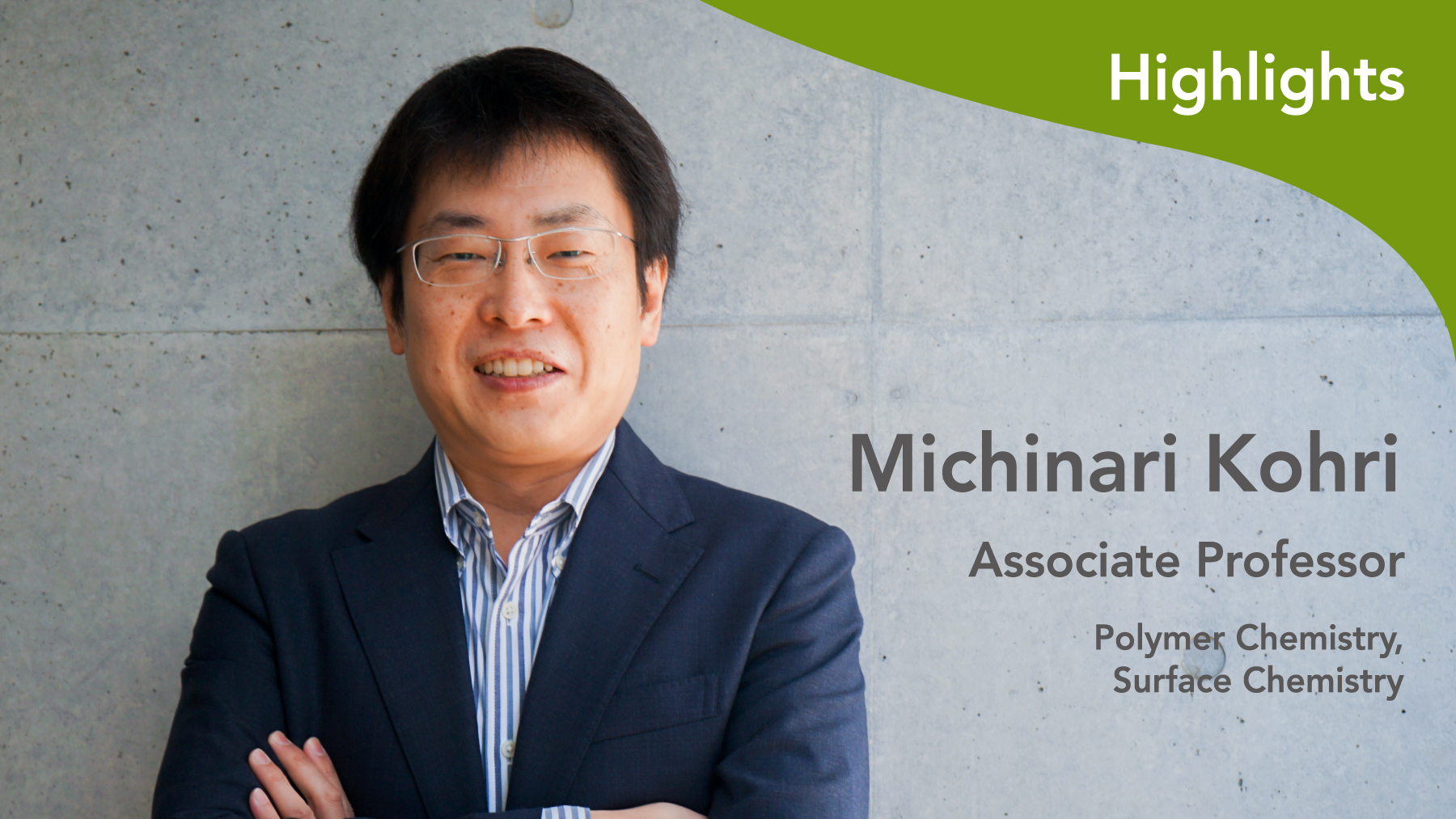In the field of materials development, the biomimetics-based design is also drawing attention. The history of biomimetics can be traced back to the announcement of nylon by DuPont in 1935. Nylon was the first synthetic fiber created by imitating natural fibers such as cotton and silk, and it is still widely used today.
In recent years, new materials that mimic living organisms' microscopic structures have progressed rapidly. For example, we can now see a full-body swimsuit inspired by shark skin's surface shape, a yogurt-resistant lid and a set of snow-proof traffic lights inspired by lotus leaves' water repellency.
Researchers from various fields in industry and academia are engaged in the design of such biomimetic materials. Our laboratory is engaged in research from the perspective of polymer science and interface science. The polymer science methods allow us to create materials that mimic the organic materials that initially exist in living organisms' bodies.
Now, looking at the natural world, there are many birds and insects with vivid colors, and some of the colors produced are known as "structural colors." Structural color is shown when light strikes the microstructure and is reflected to human eyes. The structure color has characteristics that change its color depending on the direction from which we look, and is resistant to fading. When we observe peacock's feathers through a microscope, we can see that vivid color is a structural color produced by microstructure with granular melanin's regular arrangement.
Melanin is a black substance that is also a component of human hair. In 2015, we succeeded for the first time in artificially reproducing peacock feathers' coloration with their unique luster by devising both materials and structures [1][2]. We are going to apply this outcome to the development of cosmetics that come in direct contact with the skin since the artificial melanin material uses almost the same ingredients as those found in our bodies. We are also conducting research focusing on the adhesion mechanism of mussels[3]. Mussels adhere to rocks and other surfaces via an adhesive protein called footstool. Artificial polymeric materials that mimic this protein can adhere to various surfaces, regardless of the material, such as organic, inorganic, or metal. By combining this with water-repellent materials, we can create water-repellent surfaces.

Observing birds' feathers in nature closely reveals that their feathers' surface is hydrophobic, allowing them to fly even on a rainy day. On the other hand, commercial drones, which are precision machines, are not recommended to fly in rainy circumstance because of the high risk of failure. By imparting water repellency to the drone's surface using polymeric materials, it may be possible to make it fly stably in any climate.
In the process of biomimicry research, it is essential first to analyze living organisms. For this reason, we are working with a biologist who specializes in birds and insects. By combining engineering and biology, we aim to understand living organisms from a new and unique perspective and develop materials that surpass living organisms.
Reference
- [1] M. Kohri, Y. Nannichi, T. Taniguchi, and K. Kishikawa, Biomimetic non-iridescent structural color materials from polydopamine black particles that mimic melanin granules, Journal of Materials Chemistry C, 2015, 3, 720-724. DOI: 10.1039/C4TC02383H
- [2] A. Kawamura, M. Kohri, G. Morimoto, Y. Nannichi, T. Taniguchi, and K. Kishikawa, Full-color biomimetic photonic materials with iridescent and non-iridescent structural colors, Scientific Reports, 2016, 6, 33984, DOI: 10.1038/srep33984
- [3] M. Kohri, H. Kohma, Y. Shinoda, M. Yamauchi, S. Yagai, T. Kojima, T. Taniguchi, and K. Kishikawa, A colorless functional polydopamine thin layer as a basis for polymer capsules, Polymer Chemistry, 2013, 4, 2696, DOI: 10.1039/C3PY00181D
Profile
Michinari Kohri
Graduated from the Department of Bioengineering, Graduate School of Engineering, Tohoku University in 2007. Ph.D. After working as assistant professor at the Graduate School of Engineering, associate professor since 2015. He specializes in polymer science, interface chemistry, and biomimetics.


